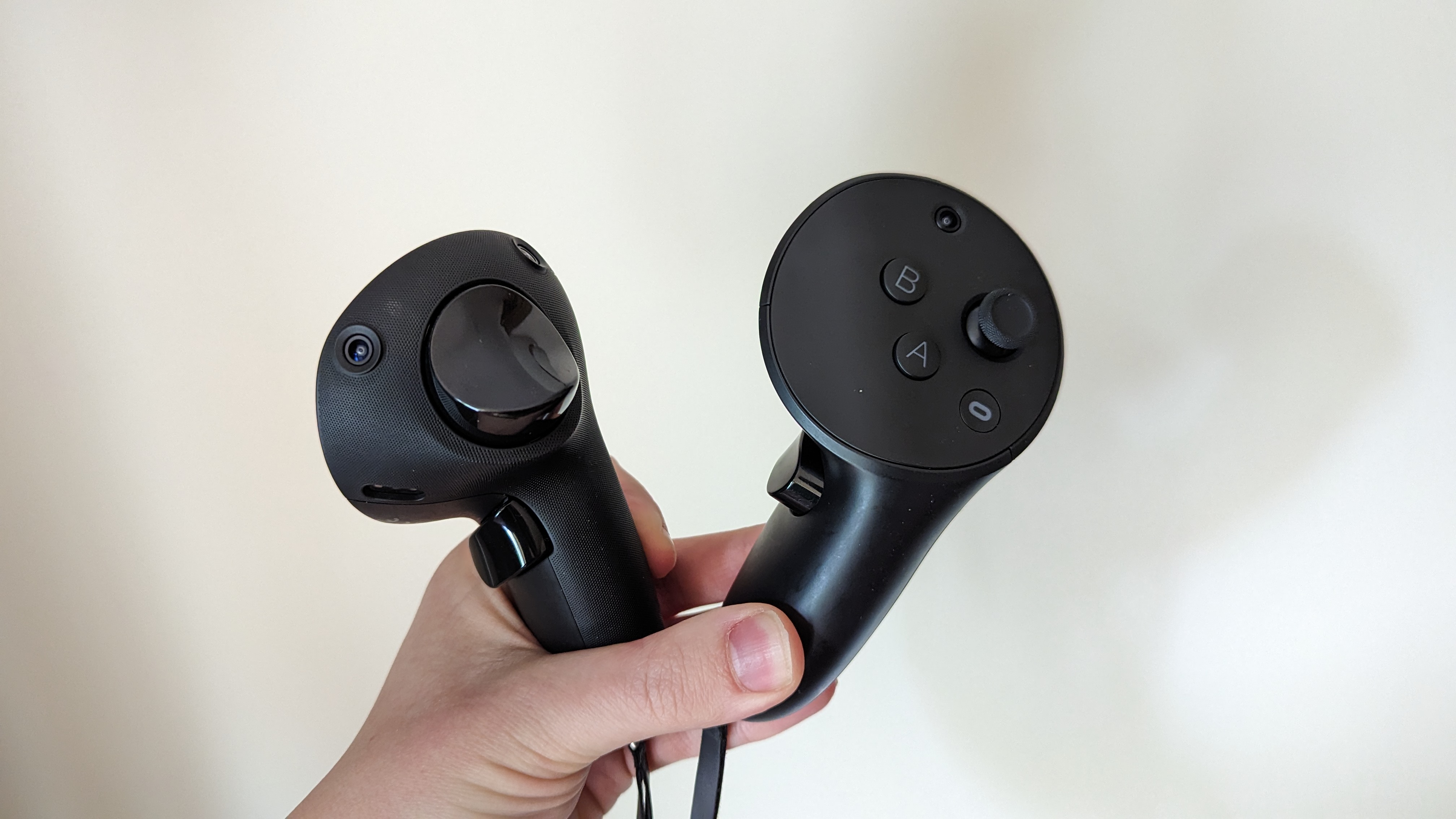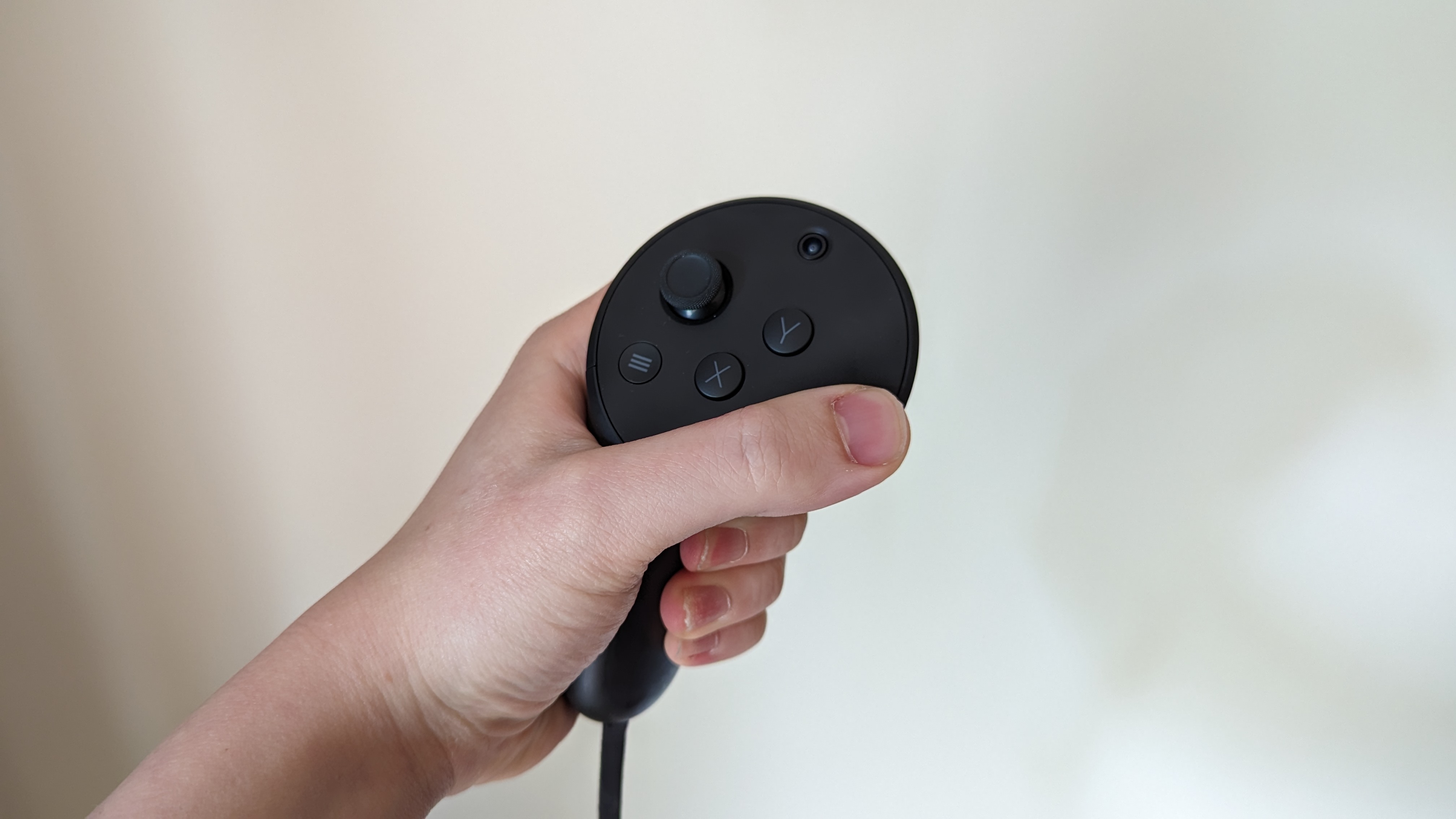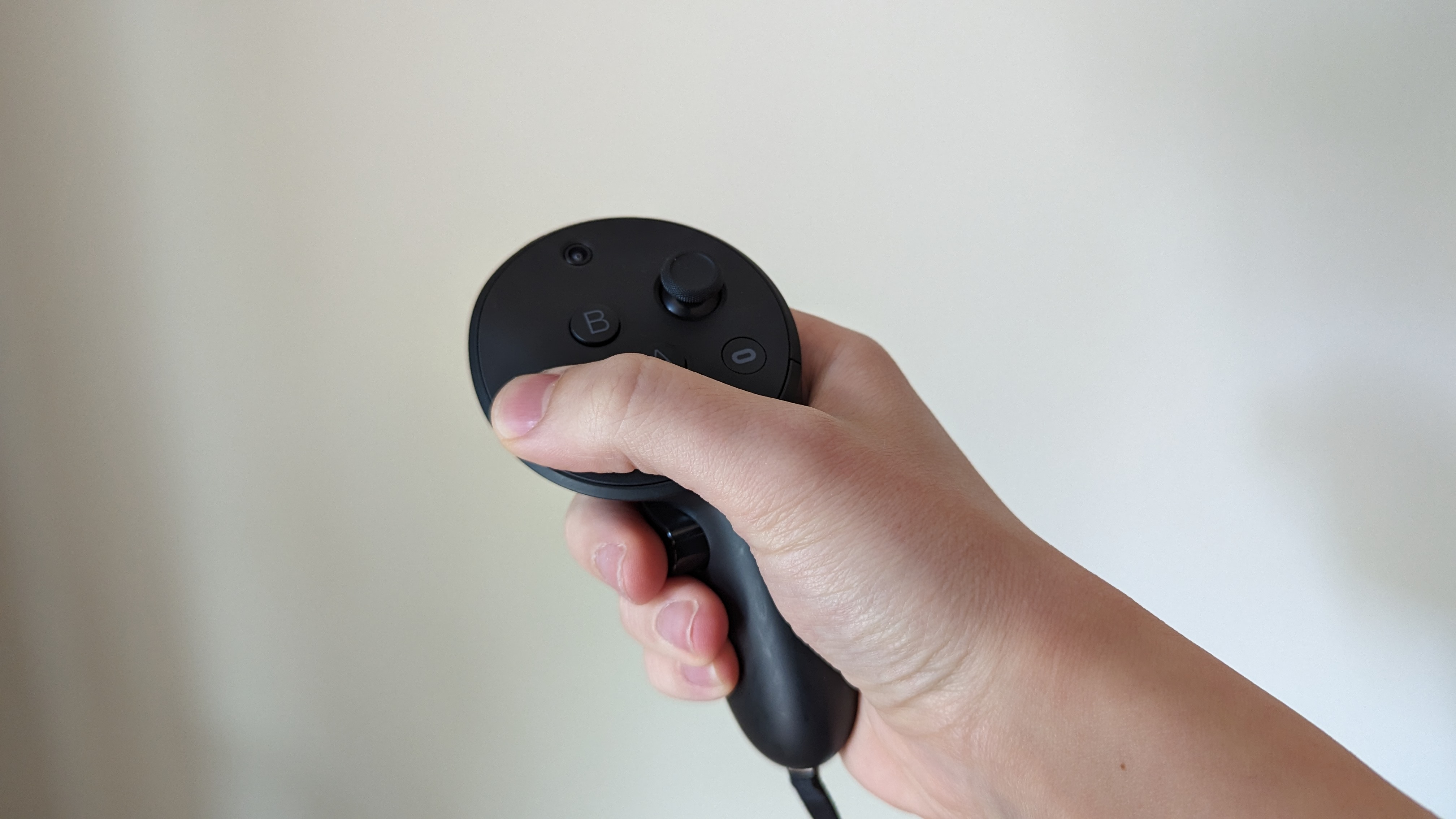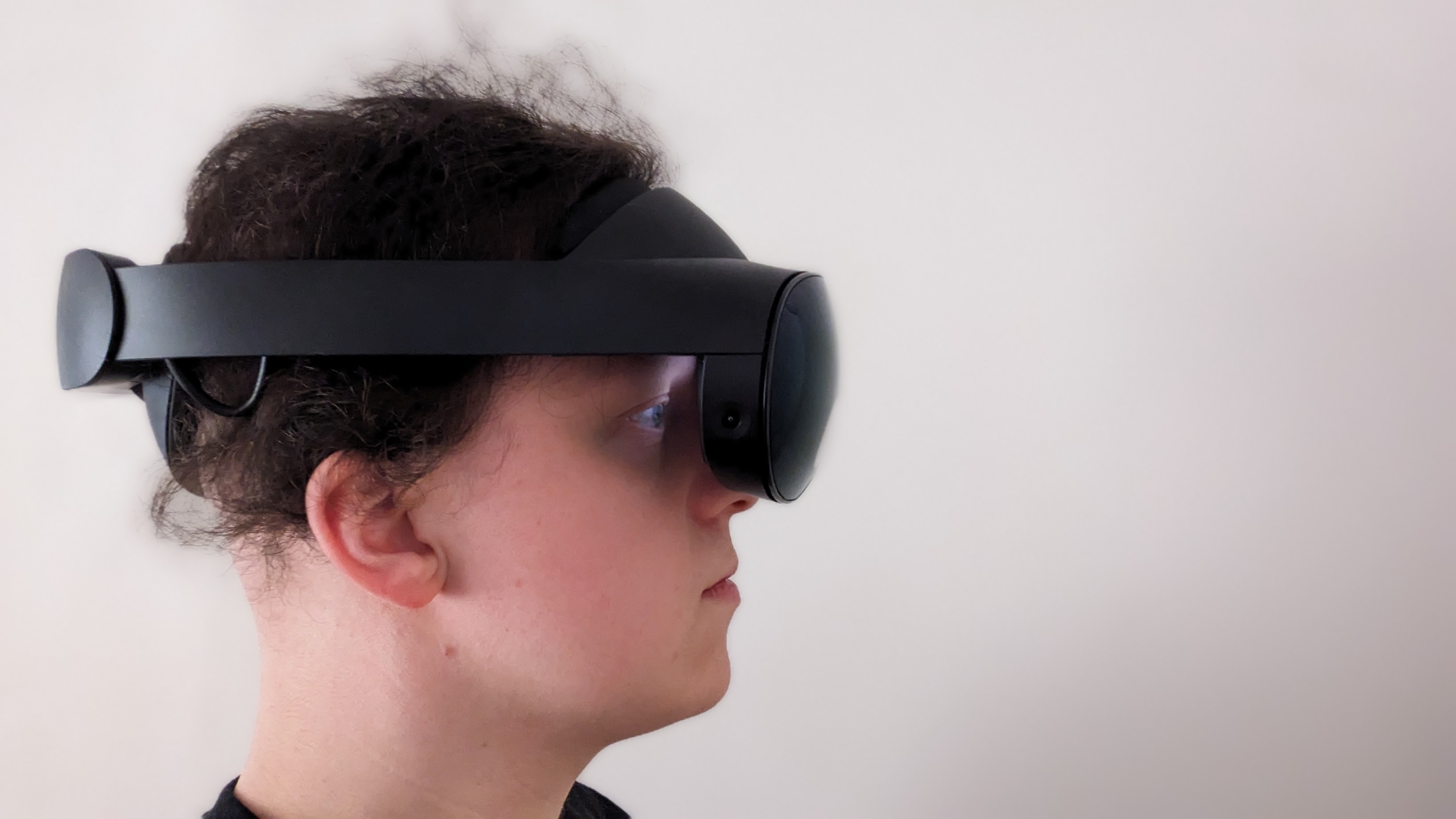iMore Verdict
The Meta Quest Pro is a very impressive VR headset from a hardware and software perspective, but the new features that make it unique from the Quest 2 feel like novelties rather than must-haves.
Pros
- +
Solid performance
- +
Great software library
- +
Superb controllers
- +
Excellent design
Cons
- -
Short battery life
- -
Not cheap
- -
Face-tracking and mixed reality underused
- -
No 120Hz display support
You can always trust iMore.
The Meta Quest Pro is one of the best standalone VR headsets out there and is therefore the biggest competitor to upcoming Apple Reality Pro VR headset expected to be revealed next month. Its performance is great, its software library is second to none, and while the Quest Pro’s design isn’t perfect it solves the weight distribution issue that its front-heavy predecessors have struggled with for some time.
Meta’s headset has its share of faults, however. While we expect Apple’s VR hardware will be pricier, the Quest Pro’s $1,000 cost isn’t what we consider cheap. Plus its most interesting upgrades over the Meta Quest 2 — face-tracking and mixed reality — are vastly underutilized by the content currently available on the Quest platform. The lack of mixed reality software is especially odd considering the headset’s design seems better suited to mixed reality than VR.
Despite these problems, there’s still an awful lot to love about the Meta Quest Pro, enough that even Apple diehards may want to consider it over the headset we expect to see at WWDC 2023.
Meta Quest Pro: Price and Availability
When it launched the Meta Quest Pro would set you back $1,499.99, but Meta has permanently discounted the device since March 15 so it’ll now only cost you $999.99. For this price you’ll get the headset itself, two controllers, charging cables, and a charging base (plus a few small, additional accessories).
The Quest Pro is a fair amount more expensive than Meta’s other VR headset the Meta Quest 2 — which costs $399.99 — but is a lot less pricey than we’re expecting Apple’s VR/AR headset to be. Apple hasn’t yet announced what the price of its rumored headset will be but estimates put it around the $2,000 to $3,000 mark.
Meta Quest Pro: Hardware and design

Operating System: Android
Display: Two mini-LED panels, 1800 x 1920 pixels, 90Hz refresh rate
Processor: Snapdragon XR2+
Ram: 12GB
Storage: 256GB
Battery: 5,348 mAh
Weight: 722g
The Meta Quest Pro only comes in a single configuration, which offers 12GB of RAM, a Snapdragon XR2+ chip, and 256GB of storage. This is twice as much RAM as is found in the Quest 2, and the XR2+ processor boasts twice as much power as the regular XR2 chip which is found in rivals like the HTC Vive XR Elite.
From a design perspective, the Quest Pro excels due to its cleverly counterbalanced weight distribution. Many VR headsets house all of their components in a single box that sits over your eyes making them front-heavy and somewhat uncomfortable. The Quest Pro has moved its battery from this front box to the back of its plastic strap — using it to counteract the weight of the displays, processors, and cameras that are still on your face. I found that this means that even though the headset is heavier than the Quest 2 — weighing 722g instead of 503g — the Pro is more comfortable to wear for longer periods of time. Just don’t try wearing it all day; I did and it does get pretty uncomfortable around the three-to-four-hour mark.
iMore offers spot-on advice and guidance from our team of experts, with decades of Apple device experience to lean on. Learn more with iMore!
Another change the Quest Pro makes to the Quest 2’s more traditional headset design is that it doesn’t create a seal around your eyes. Instead, there’s a gap underneath and to the sides of the headset so you can always see the real world. When you're using the Quest Pro for mixed reality this design feature is awesome, — I found it really helps to sell the experiences that blend the real and virtual worlds — but for virtual reality, this constant reminder that you haven’t really left your living room (or wherever you choose to play VR) can be immersion breaking.

A more universally loved design feature of the Quest Pro is its controllers.
A more universally loved design feature of the Quest Pro is its controllers. A major change for the Quest Pro’s handsets is that they lack a tracking ring normally found on VR controllers. Instead of this physical plastic ring that the headset’s cameras follow to know where your hands are, the controller has inbuilt cameras of its own that allow it to know its position much more accurately. This also means you can move the controllers out of view of the headset without losing tracking — making VR experiences feel more immersive.
Meta Quest Pro: Software and performance

Simply put, Meta’s VR headsets offer the best selection of games and apps of any standalone VR headset.
While some excellent virtual reality experiences are exclusive to PC and console VR setups — the likes of Half-Life Alyx and Horizon Call of the Mountain — the Quest store has something to scratch every VR itch. Want to get active? Try Supernatural or Beat Saber and let music fuel your fitness routine. Looking for an adventure? The Light Brigade and Resident Evil 4 VR are an absolute blast. Need to unwind after a busy day? You can’t beat a round of Walkabout Mini Golf. And that’s just the start of what the Quest platform has to offer.
When it comes to native productivity-focused apps, however, the Meta Quest Pro is something of a letdown, even if Horizon Workrooms will let you bring your Mac into VR so you can use its software on three massive virtual displays while kicking back in your VR home office. Sometime in the near future Meta’s platform will get a massive boost from Microsoft when its Office apps (Word, Powerpoint, Excel, etc) get Quest-compatible versions so you can work in VR with simply your headset. Just don’t expect it to get labor-intensive software such as video editing or the like — the Quest Pro specs aren’t really built to handle those kinds of activities so they aren’t available natively and likely never will be.

As for performance, the Quest Pro is great. Its XR2+ chip and 12GB of RAM allow it to confidently handle every game and app I ran with no noticeable stuttering or other performance issues. Its Android-based OS runs smoothly as well; the UI is clean and Meta releases a reasonably steady stream of updates that add new features and more minor improvements roughly every month or two.
The only fault I can find is that the load times can be fairly long, especially when booting up one of the larger and more in-depth VR experiences.
Meta Quest Pro: Features

Back when the Meta Quest Pro was unveiled, Meta keenly promoted full-color mixed reality, eye-tracking, and face-tracking as what made this a next-generation VR gadget — and the reason why this headset deserved its premium price. Unfortunately, these features are something of a novelty rather than feeling fleshed out.
That’s not to say they’re bad — though passthrough (a video feed of the real world used for mixed-reality experiences) is much grainier than I’d like — there’s just very little software that uses these tools to the full. Mixed reality is used by only a handful of apps, and many of the experiences feel gimmicky. If you aren’t interested in the metaverse then you won’t use eye or face tracking much at all beyond getting help adjusting the headset’s fit.
Hand tracking is the only Quest Pro feature I use regularly, but it’s a feature found on many VR headsets.
Hand tracking is the only Quest Pro feature I use regularly, but it’s a feature found on many VR headsets — even the Quest 2. A good selection of titles in the Quest store offer hand-tracking support, and thanks to features like direct touch — which let you tap and swipe on Quest menus like you’re using a smartphone — there are many occasions where I’ve used the headset without picking the controllers up once.
Meta Quest Pro: Battery life

One disappointing problem with the Quest Pro is that its battery life could be better. Despite having a 5,348 mAh battery which has a roughly 44% higher capacity than its predecessor’s (the Quest 2), the Quest Pro can only last for around one to two hours on a single charge. The Quest 2 can run for between two to three hours on a single charge.
The only great thing about the Meta Quest Pro’s battery is how you charge it. You can plug a USB-C cable into a port on the side of the headset if you want to keep it juiced up while you’re wearing it, or you can take the headset off and place it on its charging pad — which also has space to charge the controllers up at the same time as well. This pad and the headset may lack a version of Apple’s MagSafe charging — so you have to place Meta’s Quest Pro and its controllers on the pad correctly for them to charge — but I really like this compact station as an alternative to the mess of wires you’d typically need to charge up a VR headset and its handsets.
Meta Quest Pro: Should you buy it?
You should buy this if:
- You want access to the Quest platform
Right now the Quest platform is unrivaled in the standalone VR space in terms of its software selection and reliability. And with support from Microsoft set to arrive in the near future, it’ll only get better.
- You want to try (relatively) affordable VR
The Meta Quest Pro is far from cheap, but if the rumors about Apple’s VR headset costing between $2,000 and $3,000 are true then Meta’s gadget is much more budget-friendly at just $1,000. But you could save even more by opting for the Meta Quest 2.
- You don’t want to wait for Apple’s VR headset
At the time of writing Apple’s VR headset hasn't launched — and there’s no guarantee that Apple will ever release the product, even if the rumors are pointing towards it being likely. If you want a VR headset now you’ll need to opt for the Meta Quest Pro or another VR headset on the market.
You shouldn’t buy this if:
- You’re dedicated to the Apple ecosystem
If you rely on Apple gadgets and software you’ll likely find any eventual Apple VR/AR headset will boast better compatibility with your setup than Meta’s hardware. So far Meta has only announced plans to support Microsoft Office apps on its hardware, while rumors suggest that Apple’s headset will support Apple’s suite of productivity software — potentially even Logic Pro and Final Cut Pro.
- You want laptop-like performance
The Meta Quest Pro performs really well, but its Snapdragon XR2 Plus isn’t offering the laptop-like performance we’re expecting from the Apple VR/AR headset (which is believed to use an M2 chipset).
- You want to be immersed for a long time
Two hours of use on a single charge will be more than long enough for many VR headset users but for others, the Meta Quest Pro’s short battery life will be a deal breaker.
Meta Quest Pro: Verdict
I really enjoyed using the Meta Quest Pro as it’s a super solid VR headset that is worth the investment if you have the cash to spare. Its comfy design means you should be able to use it until the battery runs dry just fine and the Quest platform is home to some fantastic software.
It’s a shame that there aren’t more reasons to use the headset’s mixed reality and face-tracking capabilities, but hopefully, Meta will address these issues in the future. Its partnership with Microsoft should solve the Pro’s current lack of productivity software, so Meta has set a precedent that it's keen to develop its platform rather than let it stagnate.
This VR device won’t be for everyone though. Those of you after greater performance will want to wait and see what Apple has up its sleeve or invest in a PC VR system like the Valve Index (though you will need a powerful computer to make the most of it). If you instead want more bang for your buck, you might want to try the Meta Quest 2.

Best controllers
The Meta Quest Pro costs a pretty penny, but it's solid feature set and excellent controllers make it a very good option for getting into VR.

Hamish is a Staff Writer for TechRadar, having previously written for the site and Gfinity Esports as a freelance writer. He has been writing about tech and gaming for multiple years, and now lends his experience to cover news and reviews across everything on TechRadar (from Computing to Audio to Gaming and the rest). In his free time, you'll likely find Hamish humming show tunes while building Lego or playing D&D with his mates.

